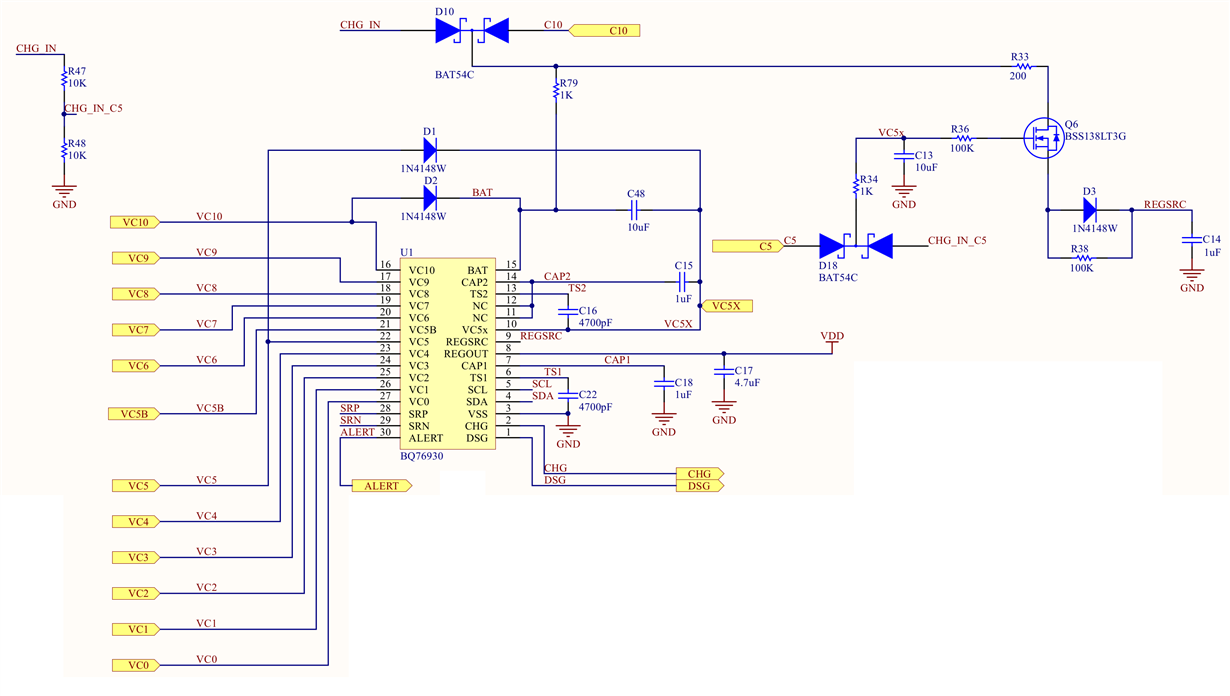We developed and manufacture a BMS for 10 cells using the BQ76930.
We've seen customer with problems with the battery and when we analyze the issue, we've seen that the BQ76930 doesn't respond any I2C.
The BQ76930 works fine again after disconnecting all the cells and reconnecting them again, we don't know exactly which were the conditions when the problem happened, however we have observed ourselves this problem when the MCU sends the the commands for entering in Shipping mode.
Some users that reported this issue confirmed that they didn't try to enter in Shipping Mode and the BMS stopped the I2C communication while running normally.
We've been working on a solution for our next manufacturing batch to reset the BQ76930 from the MCU, in the datasheet says that in order to reset the BQ76930 you have to put the (BAT–VC5x) and (VC5x–VSS) below the VSHUT and rebooting by applying the appropriate VBOOT signal to the TS1 pin.
If we use a couple of mostets to short circuit the (BAT-VC5x) and (VC5x-VSS) from the MCU we should be able to do reset the BQ76930, however, we're not sure if this could be done with all the other cells connected.
Is there any other recommended way to reset the BQ7690 from the MCU without having to disconnect the cells?
What could be the cause of the i2c becoming unresponsive?
We would like to solve this issues as soon as possible
Thanks


